If you’ve given in to the sourdough craze, you might have a starter quietly fermenting in your fridge or counter top. Keeping a sourdough starter is a fun and sustainable way to up your baking game.
But if sustainability matters to you, you might find it a waste to throw out your extra. Sure, it can go to your composting bin, but is there a way to use up your discard starter?
The most effective way is to give it to friends, so that they can start their own culture. However, you may not have a legion of baking friends waiting at the ready. Instead, you can use your leftover starter in other recipes!
Let’s dive into all the different recipes you can try, and a few tips for ensuring your discarded starter keeps its robust taste, even over time. But before all of that, what exactly is a sourdough starter?
Contents
What Is Sourdough Starter?
One of the most important ingredients in baking is your leavening agent. Since you’ll be using a great deal of it, why not make your own?
A sourdough starter is a way to create your own yeast; it is made from a mixture of flour and water. Once mixed, this concoction is allowed to rest for a few days. During this time, the mixture ferments, creating yeast. This yeast can then be added to your dough, serving as a leavening agent and giving your bread that iconic, tangy taste.
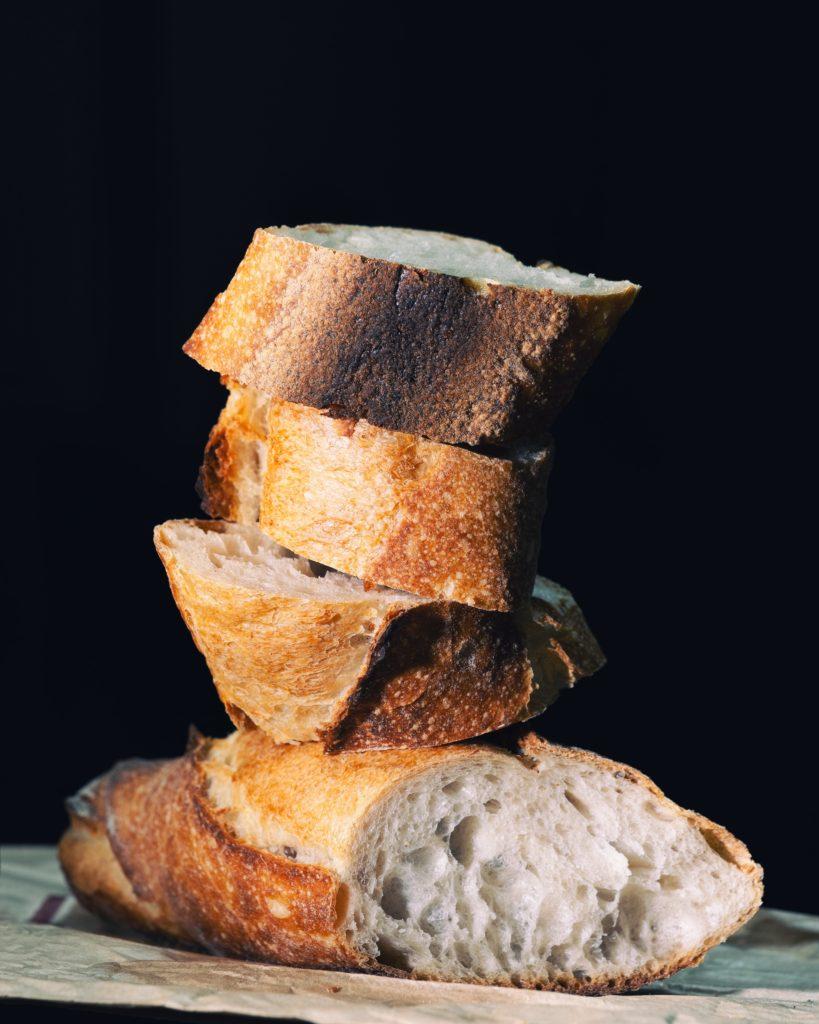
How to Use Sourdough Starter
A sourdough starter is used like any other leavening agent. You will need to prepare it before baking, but unlike other leavening agents, you will need to maintain your starter by adding a bit of flour and water. This allows your starter to continue fermenting and creating yeast (which lets your dough rise).
If you want to learn the steps on how to maintain a sourdough starter, check out this guide here.
Why Throw Out Excess Starter?
Unmanageable
Maintaining your starter is necessary, but that often means your starter just keeps growing and growing. A great amount of sourdough starter can be a bad idea, even for experienced bakers. It can be harder to maintain, which means that you’re more likely to kill off the fermentation, and you will have to create a new starter from scratch.
To avoid this, bakers often throw out some of their starter once it has exceeded a manageable amount. In fact, instructions for beginning your own sourdough starter often includes throwing out at least half of the mixture before even it begins fermenting!
Flavor
Another reason to throw out extra starter is for flavor. The more starter you have, the more that tangy, sourdough flavor will be present in your bread. Some people don’t like an excess of that, since it can overshadow the other flavors.
Difficult to Bake
If you try to use starter that’s ‘overgrown’, it may be harder to bake with, since your starter will have less yeast present (relative to the amount of starter). You will need to use more, and have longer rising times.
If you’re an experienced baker, you can try using this type of starter for its more robust flavor. For the rest of us, though, eyeballing a recipe is hazardous; our flavors will be off, or even worse, our dough won’t rise.
Thankfully, you won’t have to feel so wasteful when throwing out excess starter. We have some sourdough starter discard recipes you could make to use up your extra starter.

When to Use Discard Sourdough Starter
Not all recipes can be made with discard sourdough starter. If you expand past our suggested recipes, be prepared for some trial and error.
More experienced bakers can likely estimate whether or not a discard starter will work with the recipe. As a rule of thumb, recipes that meet some (or all) of the following will do well with discard starter:
- The hydration needed in a recipe is similar to your starter (thicker doughs often have less water relative to flour).
- You aren’t using your sourdough starter for leavening, or your recipe doesn’t need leavening.
- You aren’t using your sourdough starter to ferment grains or flour.
Cultures for Health categorizes the recipes for discard starter into three categories:
- Unfermented Flour: This category is for recipes wherein all or part of the flour isn’t fermented. Once the dough is created, the bread is immediately cooked. Common recipes included in this category are waffles, pancakes, and quick breads.
- Fermented Flour: This category is for recipes wherein flour is fermented, so that the bread rises before baking. However, other leavening agents should be added, and the sourdough starter isn’t used for leavening. Common examples of this category are muffins and breads.
- No Flour: Since there is no additional flour present, this category does not need leavening and rising time. Instead, it uses the flour in the starter, which is already fermented. A bit of leavening agent is added to the recipe, often in the form of eggs. This category is often used for recipes that do well with that tangy sourdough flavor. A good example is this Sourdough Crepe Recipe from Cultures for Health.
Sourdough Discard Recipes
Before you start baking with discard sourdough, it’s wise to choose recipes that already account for the discard sourdough in their ingredients. Here are some you can always turn to whenever you have extra starter on hand.
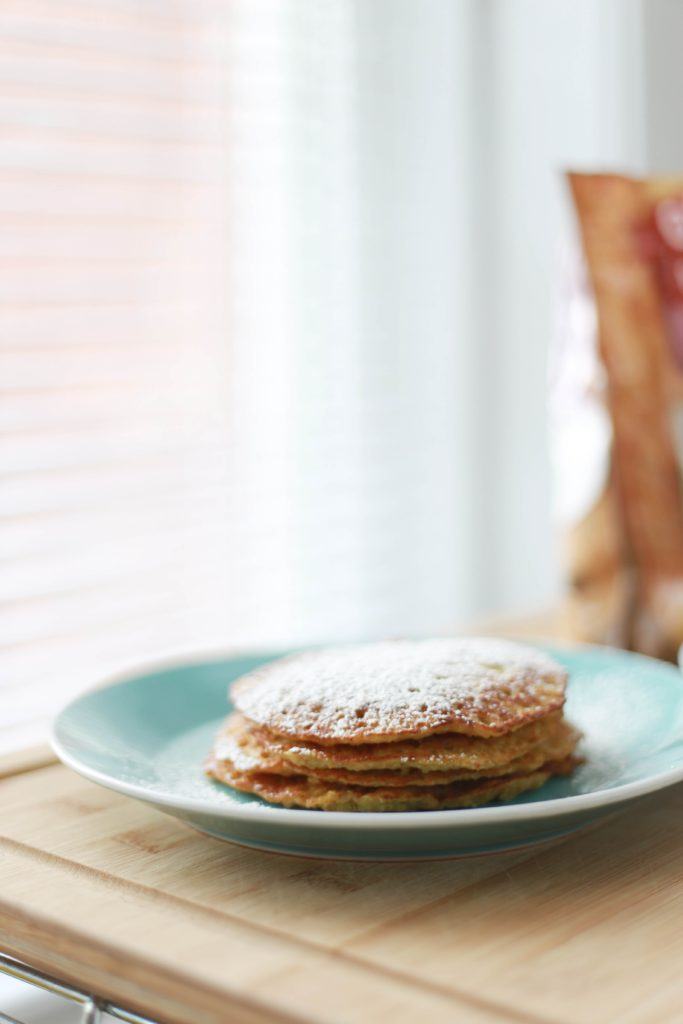
Sourdough Pancakes
These Sourdough Pancakes are a great way to introduce yourself to discard starter recipes. They’re fun, simple, and can be made week to week. If pancakes aren’t your style, dig out your waffle iron and switch things up! No adjustments necessary.
Ingredients
Overnight Sponge
- 2 cups of all-purpose flour.
- 2 tablespoons of sugar.
- 2 cups of buttermilk.
- 1 cup of sourdough starter, unfed/discard.
Waffle or Pancake Batter
- Overnight sponge.
- 2 large eggs.
- 1/4 cup of vegetable oil or 4 tablespoons of melted butter.
- 3/4 teaspoon of salt.
- 1 teaspoon of baking soda.
Procedure
- Begin by making your overnight sponge. Stir your refrigerated starter and remove 1 cup.
- In a large mixing bowl, mix in the starter, flour, sugar, and buttermilk.
- Cover and let rest for 12 hours or overnight at room temperature.
- In a small bowl, beat the eggs and oil or butter. Add this to the sponge.
- Add salt and baking soda.
- Pour batter into your prepared skillet or waffle iron. Cook until both sides are golden brown.
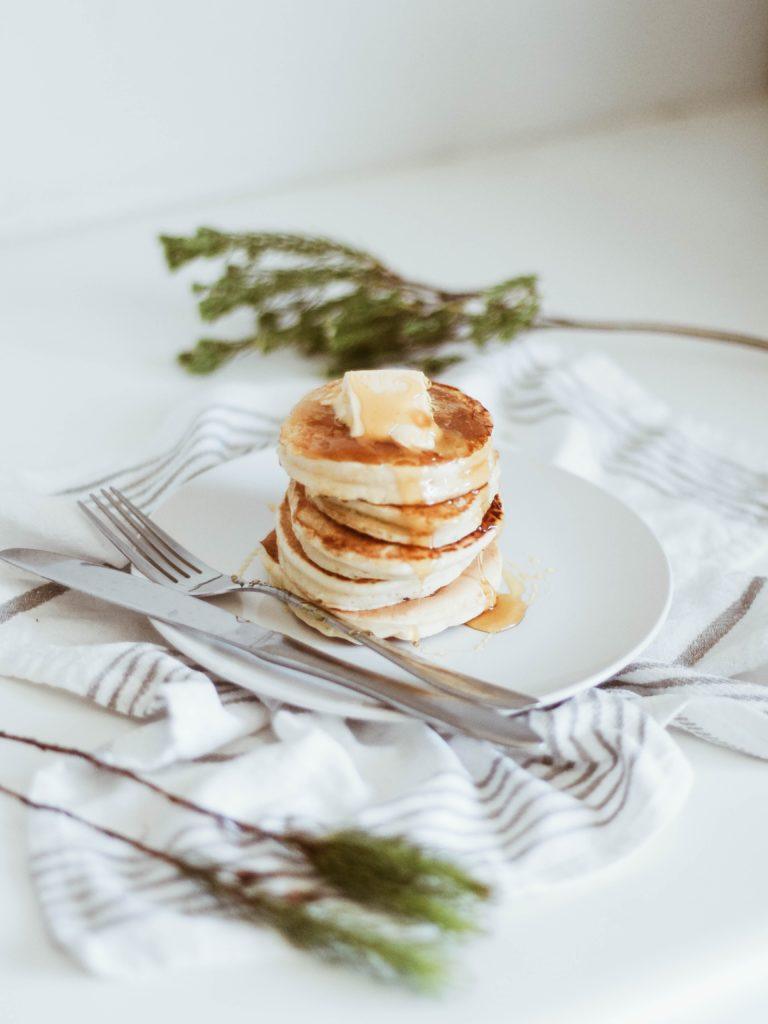
Sourdough Crackers With Olive Oil And Herbs
Pancakes and waffles are a tried and true way of using up discard sourdough. If you’re looking for something unique, however, you can try out this versatile recipe. You don’t have to limit yourself to pancakes—discard starter recipes can be fancy enough to serve to your friends at brunch.
Ingredients
- 7/8 cup of mature sourdough starter.
- 1/2 cup of all-purpose flour.
- 1/2 cup of whole wheat flour.
- 2 tablespoons of rye flour.
- 3 tablespoons of extra virgin olive oil.
- 1 tablespoon of dried herbs.
- 1/2 teaspoon of salt.
- Flaky salt, for topping.
Procedure
- In a bowl, combine your discard sourdough starter with the flours, olive oil, herbs, and salt. Knead the dough until it comes together in a smooth ball.
- Tightly wrap the dough in plastic wrap. Refrigerate for about 30 minutes or until 24 hours (if you don’t need the crackers right away).
- Preheat your oven to 350 degrees Fahrenheit. Position oven racks to 1/3 upper and 1/3 lower portions of the oven. Prepare two baking sheets; line with parchment paper or silicone baking mats.
- Cut the dough in half. Roll out one half and keep the other in the fridge while rolling. Cut the first half into 4 pieces and roll out each piece into a rectangle, as thin as possible.
- Put two rolled-out pieces onto the baking sheet. Spray or brush the top with water and sprinkle with flaky salt.
- Bake for about 15 minutes or until golden brown. Rotate the pans top to bottom and front to back halfway through baking. Repeat for the other pieces of dough.
- Let cool and serve.
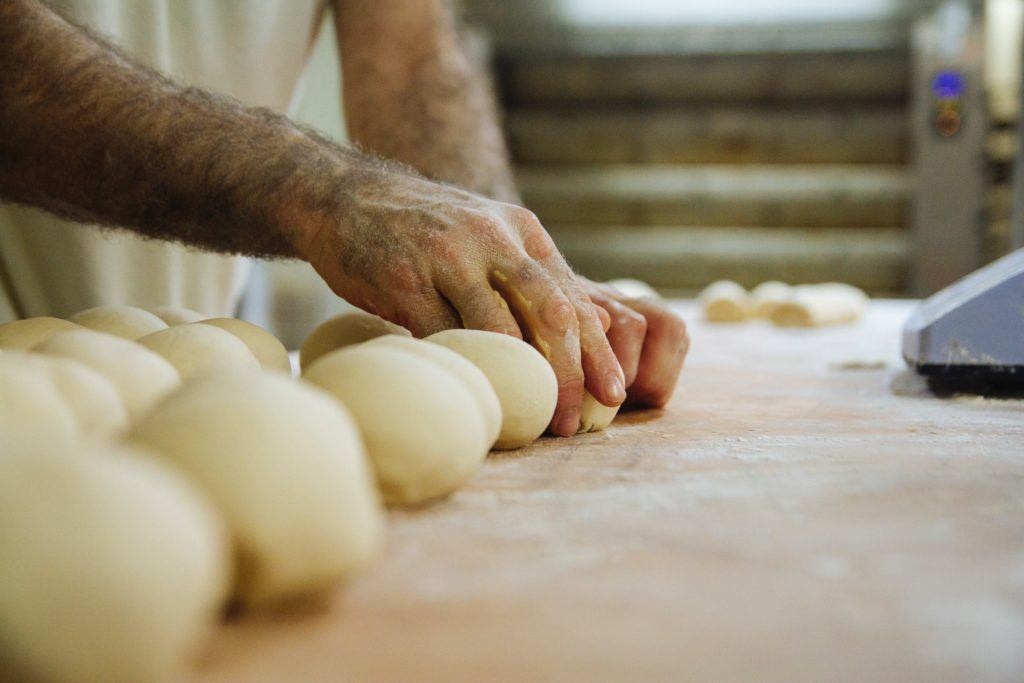
Whole Grain Sourdough Banana Bread
Whole grain sourdough banana bread is a great recipe for those who are exploring discard sourdough starter foods. This recipe is originally made with flour and oil, but has been tried and tested with this unique twist.
For those who are using discard starter, substitute the flour and oil for a total of 7/8 cup of discard sourdough starter. Add in the extra ½ cup of flour as usual.
Ingredients
- About 5 medium bananas, smashed.
- ½ cup of vegetable oil.
- 1 cup of light brown sugar.
- 2 large eggs, at room temperature.
- 1 teaspoon of vanilla extract.
- 2 cups of sifted whole grain flour.
- 1 teaspoon of baking soda.
- 1/2 teaspoon of baking powder.
- 3/4 teaspoon of kosher salt.
- 1 teaspoon of ground cinnamon.
- 4 tablespoons of chopped, toasted walnuts (optional).
- 4 tablespoons of chopped dates (optional).
For topping:
- 1 tablespoon of coarse or granulated sugar.
- 1 teaspoon of ground cinnamon.
Procedure
- Preheat your oven to 350 degrees Fahrenheit, rack in the center position. Toast your nuts (if they haven’t been toasted yet). Prepare a loaf pan by lightly greasing its surface or lining it with parchment paper.
- Mash your bananas in a large bowl. Whisk in oil, sugar, eggs, and vanilla.
- In a separate bowl, mix flour, baking soda, baking powder, salt, and cinnamon. (If using discard sourdough starter, substitute flour and oil for this and keep ½ cup of flour set aside.)
- Pour dry ingredients into the wet ingredients and combine gently. Once the batter is almost combined, fold in the nuts and dried fruit. Mix until just combined – do not over-mix.
- Pour the batter into the prepared pan.
- In a separate bowl, mix sugar and cinnamon. Sprinkle the mixture over the batter.
- Bake for about 60 to 75 minutes, until a toothpick inserted in the center comes out clean. Loosely cover the top with aluminum foil for the final 15 to 20 minutes of baking.
- Let the bread cool in the pan for 15 minutes, and then turn out onto a rack. Let cool completely before serving.
Avoiding Discard Starter
If you’re reading this, you’re probably the type who thinks that throwing out excess starter is wasteful. Discarding starter is often necessary, especially for beginners; starters can get out of hand very fast. But other than using excess starter for cooking, you can also avoid having excess starter in the first place.
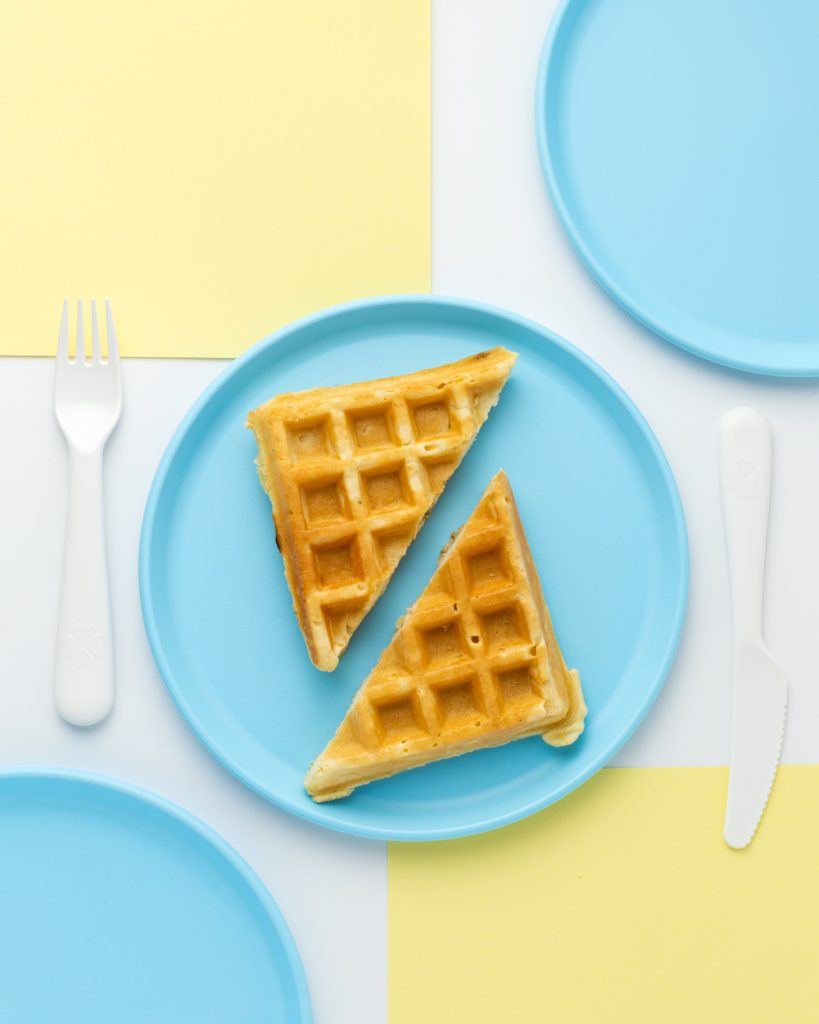
Of course, this is easier said than done.
- You will need to have some experience with sourdough starters, so that you know if there’s something off.
- It’s also important to bake regularly, so that you will keep the fermentation ongoing.
- Lastly, you will also still need to discard some of the starter, although less regularly (about once every six months, compared to once a week.)
While this can feel like a technique reserved for expert bakers, everyone with a starter can learn a thing or two from this technique.
To avoid having discard starter, the trick is to keep your starter small. Only keep the amount that you will bake with, plus some extra to keep the starter going. Whenever you bake, feed your starter the amount you baked with, so that you keep the amount consistent.
A good tip is marking a line in your jar, so you’ll know when you have too much starter. Go Eat Your Bread With Joy explains the concept in more detail here.
Conclusion
You don’t have to feel guilty every time you discard your sourdough starter. There are many ways to use up your extra, whether it’s making pancakes or substituting it in a bigger recipe. Sourdough discards can be versatile, so experiment with what recipes work for you!
